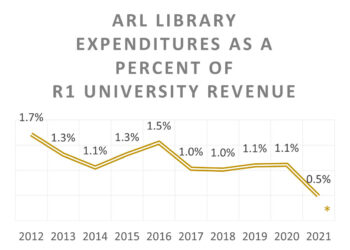
Late in 2014 I announced on the Scholarly Kitchen that I would be working with Ithaka S+R to research Amazon’s book sales to academic libraries. I am pleased to say that the early results of the pilot are now in, and they look very promising. Ithaka S+R has posted these findings in two blog posts on the Ithaka Web site. Here are the links:
Roger C. Schonfeld and Liam Sweeney: “Analyzing Library Acquisitions: Vendors, Publishers and Integrated Library Systems”:
and
Liam Sweeney, “Library Acquisitions Pilot: Looking at the Data”
Roger, of course, is my fellow Chef at the Scholarly Kitchen.
This is an interesting project and, I believe, will prove to be an important one. We are right in the middle of it now and already have some interesting findings. But the most important breakthrough has been methodological, and that could open up more aspects of library acquisitions for analysis. Be sure to try out the tool that Liam incorporated into the second of those blog posts. It’s pretty cool and it yields surprising results.
From inception this project has followed a crooked path. It began with the intersection of two separate musings: What’s happening with the sale of university press (UP) books in academic libraries, and to what extent is Amazon quietly becoming a supplier of print books to libraries? The intersection occurred around this question: With sales of UP books declining to libraries, and with UP sales for print to Amazon continuing to rise, to what extent has Amazon begun to replace more traditional wholesalers such as YBP, Baker & Taylor, and Ingram? Incidentally, these questions have significance for other publishers as well, including the trade. A few years ago I was asked by my friend Mike Shatzkin, who puts together the program for Digital Book World every year, to speak about Amazon and libraries, and was astonished to discover that trade publishers did not know that Amazon was a library supplier. (An expanded essay based on that talk can be found here.)
Since Amazon won’t share any information about sales, there was no easy way to find out what share of academic library sales they controlled. This is where Ithaka S+R came in, as Ithaka has deep experience in academic surveys. We decided to go directly to libraries and ask them about Amazon’s role. We were confident that Ithaka’s ability to generate a very high response rate would give us a good database to analyze.
And that’s when Roger and Liam came up with the methodological breakthrough. Instead of going to librarians and asking them to fill out a form, which would be subject to interpretation, could be filled out incorrectly, and would likely be ignored by many librarians, why not go directly to the library management systems themselves and get actual historical purchasing data? Precisely how this work was done is outlined in the first of the two linked blogs above. The next effect of this is that we now have an enormous amount of data from four research libraries to analyze, and this year we hope to add many, many more.
With only four libraries reporting thus far, it’s hard to make generalizations, but we were surprised by some of the data. For example, one thing that the project has demonstrated is the Long Tail of suppliers: there are many suppliers of books to libraries, which likely points to the specialized collections of research libraries. The Long Tail in turn is offset by the huge role that EBSCO (especially now that it has acquired YBP) plays in book acquisitions. There is overlap in the leading vendors of journals and books, but the data proves the point that books and journals are two distinct businesses even when the subject area is the same. We can only speculate about what other people will make of this data: how will this data affect benchmarking among library collections? What will it teach publishers about the concentrations of their programs? More prosaically, what will a publisher conclude about the effectiveness of its sales and marketing team?
As the project proceeds and we bring in more libraries (we hope for a couple hundred or more), the data will take us far beyond Amazon and the UP world. We will be able to study other aspects of collections and purchasing patterns, information that can be used to improve the effectiveness and efficiency of both libraries and publishers. So stay tuned: we hope to have something more to report by the end of the year.
Discussion
2 Thoughts on "Update on a Library Research Project"
Allow me to express the hope that the data will reveal something about the sales of revised dissertations compared with sales of books not based on dissertations. There has been a longstanding argument (to which I and TSK chef Rick Anderson have contributed) about whether sales of revised dissertations have waned since the advent of Proquest’s licensing of dissertations to libraries.



